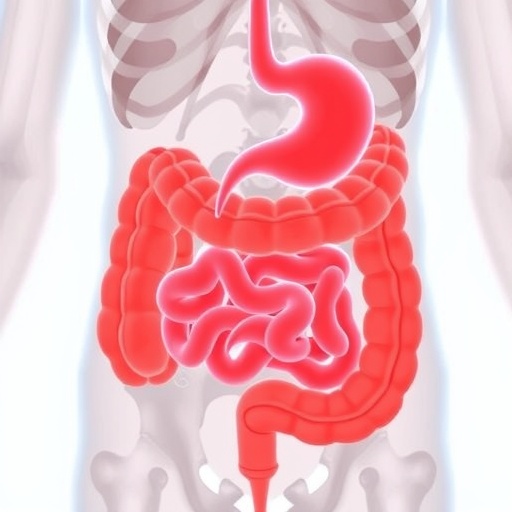A groundbreaking study conducted by researchers at Flinders University and Flinders Medical Centre has shed new light on the complexities surrounding colorectal cancer, one of the deadliest and most common cancers worldwide. Published in the esteemed Clinical Gastroenterology and Hepatology journal, this research reveals a compelling connection between the coexistence of two distinct types of colorectal polyps—adenomas and serrated polyps—and the significantly heightened risk of developing advanced pre-cancerous colorectal lesions. This revelation stands to transform current clinical practices in bowel cancer screening and surveillance, emphasizing the necessity for nuanced diagnostic strategies.
Colorectal cancer develops insidiously, often originating from benign growths known as polyps that form on the inner lining of the bowel. These polyps are typically categorized into two principal types: adenomas, which have long been recognized for their precancerous potential, and serrated polyps, which recent studies suggest may constitute an alternative carcinogenic pathway. This duality has ignited a surge of scientific inquiry into their individual and combined roles in driving neoplastic progression. The Flinders team’s novel investigation into ‘synchronous lesions’—cases where both adenomas and serrated polyps are present simultaneously—provides strong evidence that this pathological combination substantially increases the risk of severe colorectal disease.
Analyzing an extensive data set of over 8,400 colonoscopy records, the research systematically compared patient outcomes based on polyp typology. The findings are striking: individuals harboring both adenomas and serrated polyps exhibited up to a fivefold increase in the likelihood of advanced neoplastic changes at follow-up colonoscopies, relative to those with either lesion in isolation. This correlation suggests that the interactive dynamics between these two polyp types may potentiate carcinogenesis more aggressively than previously understood, underscoring a complex interplay of molecular and histopathological mechanisms.
Dr. Molla Wassie, the lead author affiliated with the FHMRI Bowel Health Service at Flinders, elucidates the clinical implications of these findings. She explains that while most polyps are benign and slow-growing, the synchronous presence of adenomas and serrated polyps signals a marked escalation in cancer risk. This phenomenon challenges the conventional paradigm of polyp assessment, which traditionally focuses on singular lesion types. The study advocates for comprehensive colonoscopy protocols capable of detecting and monitoring the full spectrum of polyp pathology to mitigate the risk of overlooked malignancies.
Furthermore, the prevalence of synchronous lesions appears more widespread than previously documented, with the data revealing that nearly half of all patients diagnosed with serrated polyps concurrently possess adenomatous growths. This high-risk cohort represents a significant proportion of the screened population, highlighting critical gaps in current clinical risk stratification models. The presence of dual pathology in a large subsection of patients underscores the urgency of revising surveillance guidelines to accommodate this heterogeneity.
Biologically, adenomas and serrated polyps are now understood to represent distinct molecular pathways fueling colorectal carcinogenesis. Adenomas typically progress via the classical chromosomal instability pathway, characterized by mutations in key tumor suppressor genes and oncogenes such as APC and KRAS. Conversely, serrated lesions often evolve through a serrated neoplasia pathway involving epigenetic modifications, including CpG island methylation and BRAF mutations, leading to microsatellite instability in tumors. The coexistence of these lesions may signify concurrent activation of multiple oncogenic cascades within the same colonic environment, thereby accelerating the transition from benign to malignant states.
Notably, the study’s findings also touch on the temporal dynamics of polyp progression. Serrated polyps appear to advance to malignancy more rapidly than their adenomatous counterparts, a fact that demands recalibrated surveillance intervals to ensure timely detection and intervention. These insights advocate for personalized colonoscopy schedules tailored to individual risk profiles, taking into account the complex interplay and progression rates of different polyp types.
Age remains a critical factor in the development of colorectal polyps and cancer, with prevalence increasing significantly after 45 years. The research reinforces the vital imperative of early detection through routine screening and timely polyp resection to disrupt the carcinogenic process at its inception. For individuals with a family history of bowel disease or previous polyp diagnoses, vigilant adherence to screening programs like the National Bowel Cancer Screening Program is paramount to improving long-term outcomes.
The clinical and public health ramifications of these findings are profound. By categorizing synchronous lesions as a distinct high-risk phenotype, practitioners can refine patient monitoring strategies and potentially improve survival rates. These results demand attention from gastroenterologists, oncologists, and policymakers alike, paving the way for updated clinical guidelines that reflect the nuanced biology of colorectal neoplasia.
This seminal work also emphasizes the broader context of colorectal cancer as a leading contributor to cancer morbidity and mortality in Australia and globally. It aligns with ongoing international research efforts striving to unravel the genetic, epigenetic, and environmental factors that underpin colorectal carcinogenesis. As such, the Flinders study contributes critical evidence supporting the development of targeted screening modalities and precision medicine approaches tailored to individual risk and lesion characteristics.
Finally, this research highlights the pivotal role of interdisciplinary collaboration between pathologists, clinicians, and epidemiologists in translating benchside discoveries into bedside applications. Only through integrative analysis of large-scale clinical data sets can nuanced relationships such as that between synchronous polyps and cancer risk be discerned, leading to practice-changing insights and ultimately reducing the global burden of colorectal cancer.
Subject of Research: People
Article Title: Risk of advanced colorectal neoplasia at follow-up colonoscopy after synchronous adenoma and clinically significant serrated polyp
News Publication Date: 5-Aug-2025
Web References:
- National Bowel Cancer Screening Program: https://www.health.gov.au/initiatives-and-programs/national-bowel-cancer-screening-program
- FHMRI Bowel Health Service, Flinders University: https://www.flinders.edu.au/cancer/research-groups/bowel-health-service
References:
- Laven-Law G, Symonds EL, Simpson K, Coats M, De Silva M, Hollington P, Cock C, Wassie MM. Risk of advanced colorectal neoplasia at follow-up colonoscopy after synchronous adenoma and clinically significant serrated polyp. Clinical Gastroenterology and Hepatology. 2025. DOI: 10.1016/j.cgh.2025.07.023
Image Credits: Flinders University
Keywords: Colorectal cancer, Adenomas, Colorectal neoplasms




